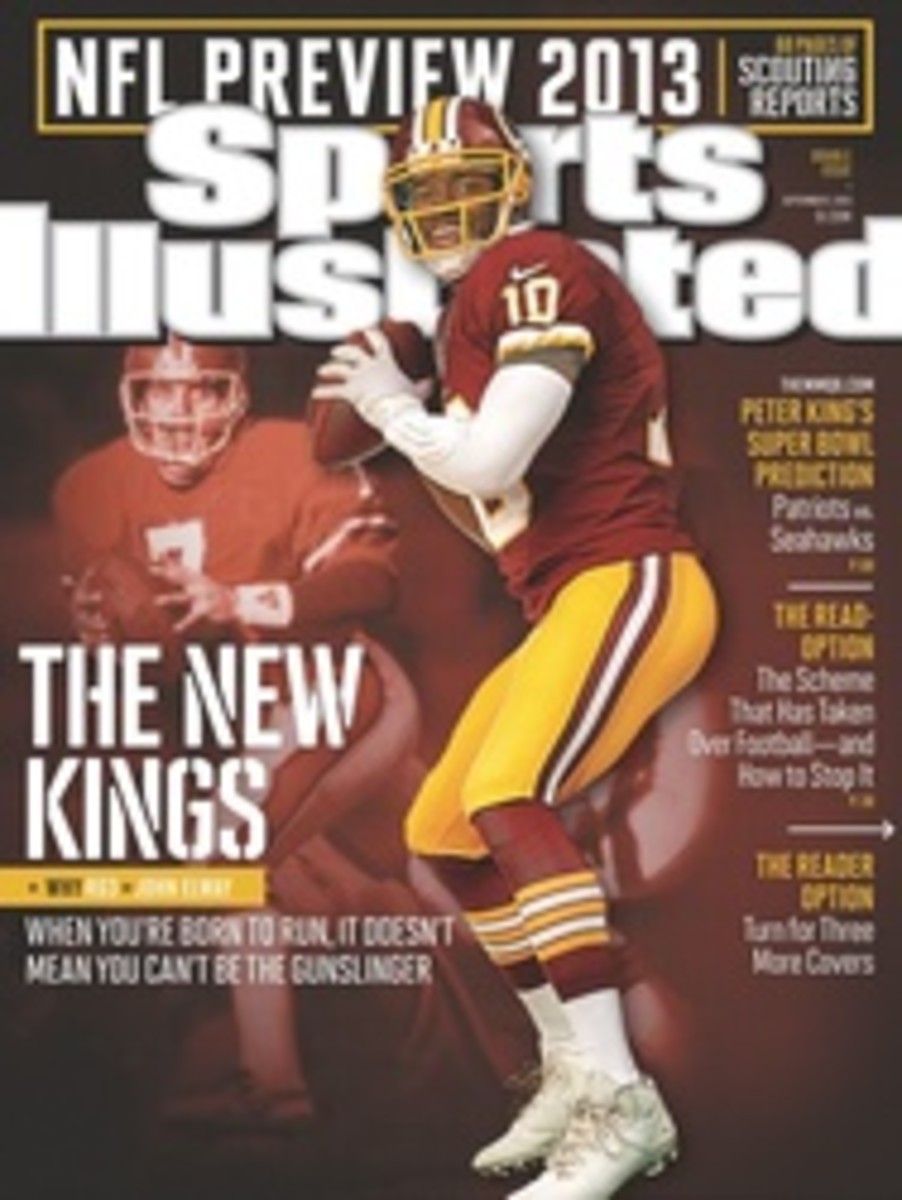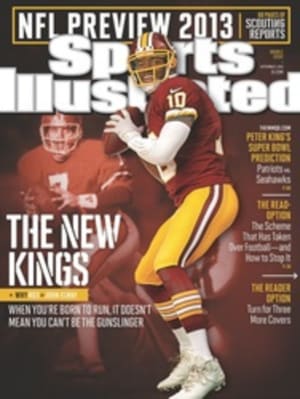
6 New York GIANTS
JUSTIN TUCK was walking along the edge of an outdoor field at the Giants' headquarters on the second day of training camp, about an hour before an early-afternoon practice, when a voice among a pack of Big Blue--clad fans asked the defensive captain the perennial question: "How many sacks are you going to get this year, Justin?"
The fan paused, then shouted, "Fifteen sacks!" Tuck grinned.
The expectations for the Giants' defensive line have never dropped off, not on a team that's relied on a relentless front to win two Super Bowl titles in the past six years. Last season, when the unit's play slackened, putting pressure on an inconsistent secondary, New York ranked next to last in the league in total defense and missed the playoffs. There wasn't just one reason for the team's overall letdown, but the Giants' attitude is simple: Success in 2013 depends on reestablishing a presence up front.
"Everybody has seen the tape, all the stuff we could have stopped," says defensive end Jason Pierre-Paul. Pierre-Paul's recovery from June back surgery, which sidelined him for the entire preseason, is just the first of many questions facing the proud but reeling unit this season. Among the others: Can Tuck return to a Pro Bowl level of play? How will the Giants adjust to changing offensive trends, particularly in their division? (Hello, Chip Kelly!) And will the line restore an identity to the defense?
While the front office left the starting secondary intact and may lean on a committee approach at linebacker, they invested resources in the trenches, drafting defensive linemen with two of their top three picks: space-eating Ohio State tackle Johnathan Hankins in the second round and productive Texas A&M pass rusher Damontre Moore in the third. Meanwhile they let go of two veterans, DE Osi Umenyiora and DT Chris Canty, and refortified the front by returning Mathias Kiwanuka to end from linebacker and adding two free-agent DTs: Cullen Jenkins, who has played in both 4--3 and 3--4 schemes, and Mike Patterson, with whom the Giants are familiar from his eight years with the Eagles.
Part of reestablishing a presence up front has meant experimenting. The formula for returning to defensive-line dominance, Tuck says, lies in evolving with the NFL's influx of college-style offenses, like the ones the Giants will face four times a year—the RG3-led Redskins and Kelly's Eagles. Versatility being key, defensive coordinator Perry Fewell has made sure that he has the personnel to fit his traditional 4--3 scheme, but he says the unit will also be "very multiple."
The Giants practiced these varied looks this summer, at times mixing in a 3--4 front, asking Tuck or Kiwanuka to stand up and swapping ends from side to side presnap based on the offensive formation. Jenkins, who can line up at end or tackle in any front, helps the Giants' combinatorics.
Keep in mind, this is a team that has long demonstrated creativity up front, moving Tuck and Pierre-Paul all over the line and developing the so-called NASCAR defense that deployed four ends to rush the passer. This is just the next step in the evolution.
No matter which schemes or lineups New York uses, the team identified one top priority for its line: Stop the run. The Giants did not last year, when they yielded 129.1 rushing yards per game, which ranked in the bottom quarter of the NFL. Opponents were able to push the ball on the ground against the Giants' front, which in turn limited opportunities for their prized pass rushers to tee off on the quarterback. Pierre-Paul, who starred with 16½ sacks in '11, led the Giants with just 6½ last season. The team's sack total was 33, which was 22nd in the league—and about one third fewer than during its Super Bowl XLVI season.
The Giants are not a one-dimensional team, not with quarterback Eli Manning and a perennially top 10 scoring offense on the other side of the ball. But just as the New York teams of the 1980s were built around their dominant linebackers, the franchise today depends on a dominant defensive line. Players use different words for the falloff last season—disgusting and unacceptable—but reestablishing a presence up front in 2013 would be something else: team-changing.
THE CASE FOR...
Wide receiver Rueben Randle
On offense, the Giants' formula for their two most recent Super Bowl titles has boiled down to Eli Manning and a triple threat of WRs: Amani Toomer, Plaxico Burress and Steve Smith in Super Bowl XLII; Victor Cruz, Hakeem Nicks and Mario Manningham in XLVI. The latter group lost Manningham in free agency in spring 2012 and then enlisted the LSU receiver Randle in that year's draft, hoping he could fill that void. Randle's assimilation lagged early last season, but he made a strong case as the team's most-improved player this preseason. Coordinator Kevin Gilbride called Randle "light-years" ahead of his rookie season, when he had just 19 catches. For his part, Randle admits that as a rookie, "I wasn't understanding everything" in a complicated system. The light switched on late last year, though, and while Cruz and Nicks missed much of the off-season program, Randle made great strides. A smooth route runner with good hands, he has made improvements in reading coverages and adjusting his routes, critical in Gilbride's system. If this progress translates to the regular season, he could be that missing piece in the Giants'
SINCE YOU'VE BEEN GONE
PHOTO
DAVID BERGMAN FOR SPORTS ILLUSTRATED
DE JASON PIERRE-PAUL
PHOTO
DOUG KAPUSTIN/MCT/ABACAUSA.COM

